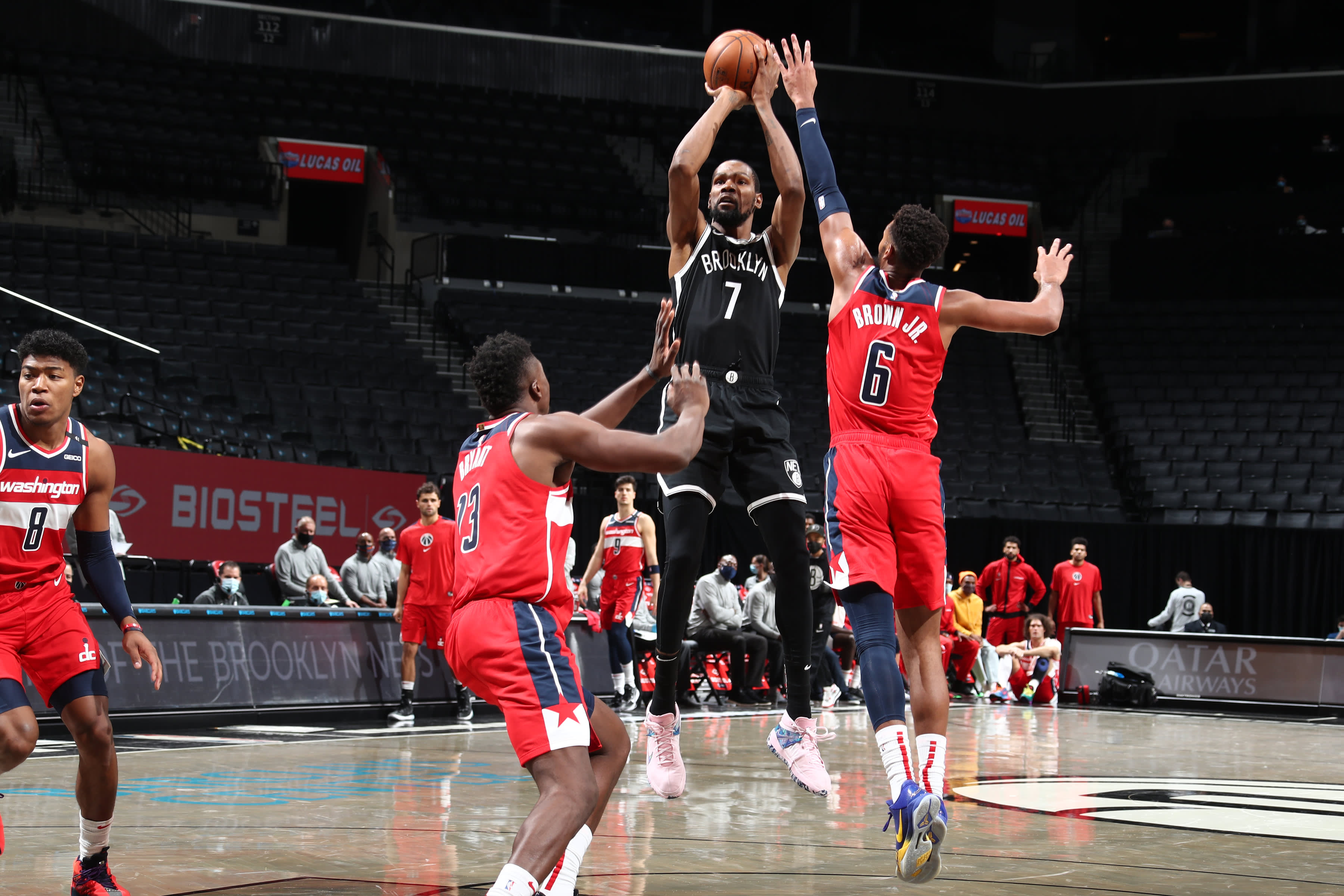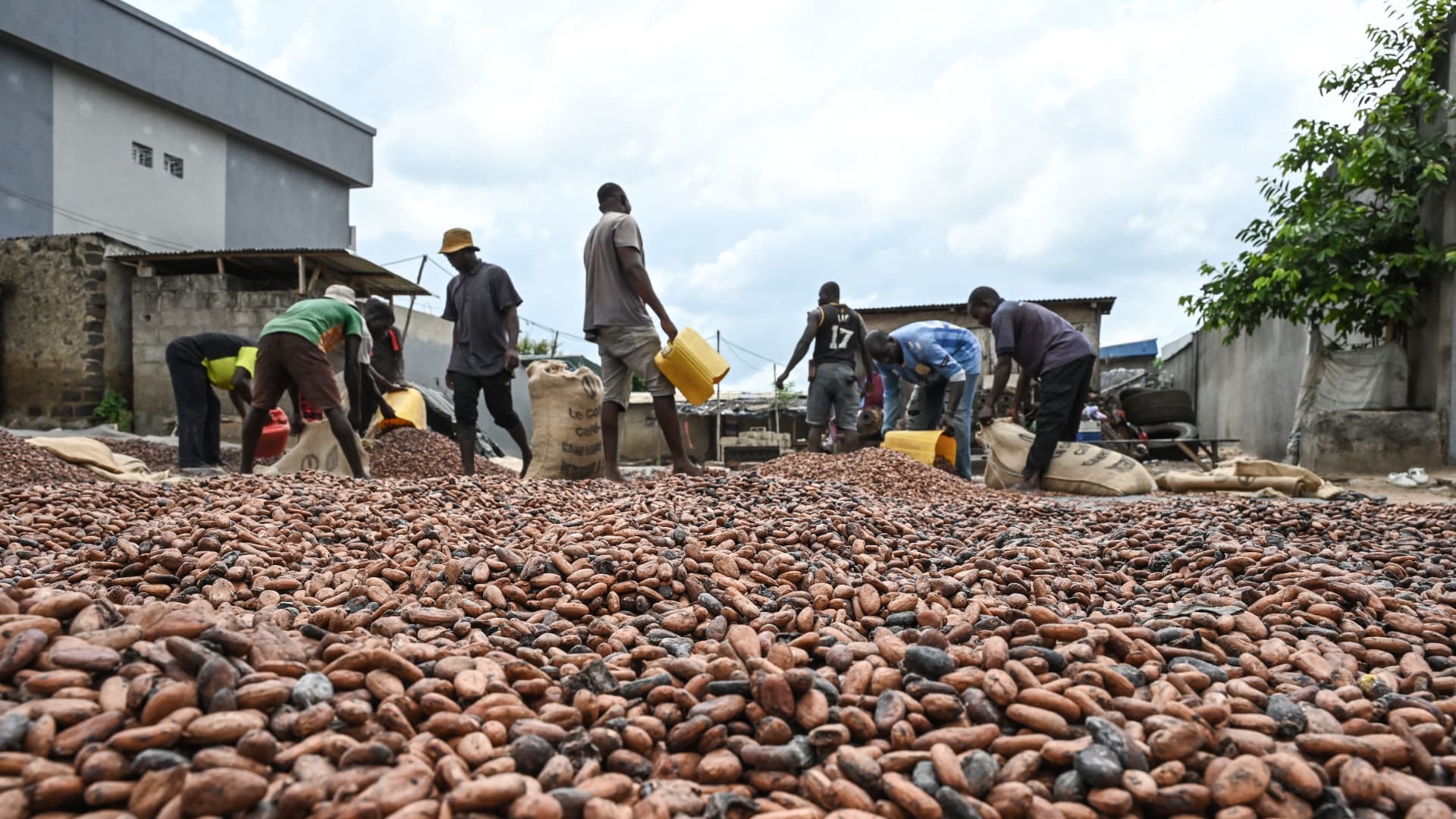
Adam Silver, NBA Commissioner.
Getty Images
On the eve of a new season, National Basketball Association Commissioner Adam Silver made clear his league would not jump the line to receive Covid-19 vaccines as the NBA attempts to normalize its business.
The NBA returns for its 2020-21 campaign on Tuesday. The league elected to play a shortened 72-game season because of pandemic interruptions to its previous season, which ended in October instead of June like usual. The NBA will attempt to finish this season before the Tokyo Olympics start in July 2021, and align for a more normal off-season before starting again in October 2021.
The NBA pulled out two heavy hitters to kick off its new season. It will showcase the Kevin Durant-led Brooklyn Nets against his former team, the Golden State Warriors, and the return of their star, Stephen Curry.
The second matchup: the defending champion Los Angeles Lakers are hosting the Clippers, their cross-down rivals. This match-up was predicted as the Western Conference finals preview, but Steve Ballmer’s team struck out early last year despite landing stars Kawhi Leonard and Paul George.
On Friday, the NBA’s Christmas Day lineup features international superstars, including the Milwaukee Bucks’ Giannis Antetokounmpo, the Dallas Mavericks’ Luka Doncic, and Denver’s Nikola Jokic.
Silver’s league is in a great position to enter a post-Covid world. The NBA is more diverse with competing teams and stars are spread out. The remaining task is managing a season where the Covid pandemic is worse than it was when the league resumed in July.
“We’re confident that we can do it,” said Silver, on his media call Monday. “And if we weren’t, we wouldn’t have started. I will say, though, that we do anticipate that there will be bumps in the road along the way.”
Anthony Fauci, director of the National Institute of Allergy and Infectious Diseases, receives the Moderna Inc. Covid-19 vaccine during an event at the NIH Clinical Center Masur Auditorium in Bethesda, Maryland, U.S., on Tuesday, Dec, 22, 2020.
Patrick Smeansky | Bloomberg | Getty Images
Supporting the vaccine
Silver mentioned the NBA would assist with “governmental efforts in terms of public messaging” to promote the safety of receiving the vaccine, acknowledging the skepticism some have about the treatment.
“To me, my sense is there’s a large group out there I would put in the category of undecided about the vaccine,” he said. “There’s one cohort, I understand, who strongly are anti-vaccines, and I think there will be opportunities to break through that.
“But I think there’s a much larger group of people who are just sort of taking a ‘wait and see’ attitude, and it is my hope that we see the potential workers getting their vaccines, healthcare workers and then the elderly, and then people are seeing that this is happening safely and successfully, that the NBA community will then welcome vaccines when it becomes our turn.”
The NBA is banking that Covid vaccines will be more widespread by April, in time for its postseason, which is scheduled to start in May. By then, perhaps local governments will provide more teams the green-light to open arenas, as playoff revenue is beneficial for teams.
“It’s a huge priority to get fans back in the arenas,” said Silver, adding roughly six teams will be able to start with spectators on Tuesday, as Florida and Texas are allowing some fans at games. “It’s my sense that we’re going to learn a lot once we have regular-season games with fans there.”
Expansion or relocation being considered
The NBA raised $900 million to support teams this year, and pandemic losses are expected to continue with no fans in the short-term.
Beyond this season, the league could help make up the difference by adding more teams, which brings expansion fees. Silver said the NBA increased discussions around the topic, but added that they’re still concerned about economic issues related to the pandemic and downturn.
Big-market clubs like New York Knicks – a team devoid of star power, with consecutive losing seasons, brand and image problems – can still make a profit. But most clubs suffer financially in slow economic cycles, which would be the case for any expansion team.
“I think I’ve always said that it’s sort of the manifest destiny of the league that you expand at some point,” said Silver. “I’d say it’s caused us to maybe dust off some of the analyses on the economic and competitive impacts of expansion. We’ve been putting a little bit more time into it than we were pre-pandemic. But certainly not to the point that expansion is on the front burner.”
Relocation is another option. Team owners can seek either option, as both carry fees paid to the NBA. Relocation lets the league avoid dividing its biggest revenue stream (media rights) between more owners, although clubs may incur relocation fees and “liquidated damages clause” fees if they attempt to escape arena leases before agreements expire.
The chatter among sports bankers has placed Seattle, Las Vegas and Kansas City in the NBA’s sights.
The bigger question is whether those markets — or any market — can support a new team during an economic downturn.
“It’s an economic issue, and it’s a competitive issue for us,” Silver said. “So, it’s one that we’ll continue to study, but we’re spending a little bit more time on it than we were pre-pandemic.”
Kevin Durant #7 of the Brooklyn Nets shoots the ball against the Washington Wizards during a preseason game on December 13, 2020 at Barclays Center in Brooklyn, New York.
Nathaniel S. Butler | National Basketball Association | Getty Images
NBA’s race to 2 billion viewers
Perhaps the NBA’s most prominent play is its desire to continue its global expansion and do so with a younger audience. Silver mentioned the league is “close to almost two billion people who are consuming the NBA in some way on social media on a global basis.”
With consumption habits changing, the NBA’s race to surpass two billion would be huge in a post-Covid world, where a new generation of consumers appears disinterested in sports.
Research firm Morning Consult notes Gen Z consumers (between the ages of 13 to 23) are “less likely than the general population to identify as sports fans. Fifty-three percent of the 1,000 Gen Zers surveyed considered themselves sports fans, compared with 63 percent of U.S. adults and 69 percent of millennials in a subsequent survey.”
The only U.S. major league Gen Z consumers “over-indexed as fans relative to the general public” was the NBA.
That interest among younger consumers is why media experts project ratings will rebound. And once Nielsen changes its ratings system by 2024 to include digital/streaming metrics, the league’s media rights fees will continue to trail only the National Football League.
“The one thing you do know about the NFL, it is the most engaging thing on TV, followed by the NBA,” said Kevin Krim, the founder and CEO of advertising metrics data firm EDO.
Silver is a 72-game season away from navigating the NBA through its most challenging period. Again, some bumps over the next few months are expected, but the NBA seems positioned for a brighter future in a new decade and post-Covid-19 reality.
That future starts on Tuesday.




